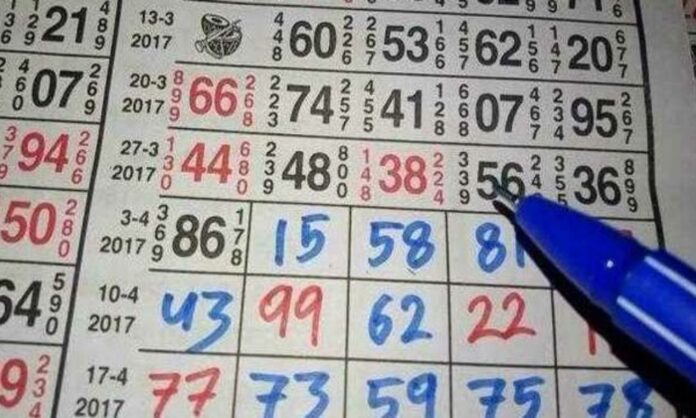Introduction
Numbers have always fascinated human beings. Whether through mathematics, probability, or simple curiosity, people have sought to find order in apparent randomness. For enthusiasts of number-based games, charts play a central role in organizing outcomes and providing insights into trends. Among these, the Kalyan Chart holds a distinctive place, offering a structured look into results over time.
What is a Kalyan Chart?
The kalyan chart is essentially a record of results presented in an organized, tabular format. It displays outcomes by date and session, making it easier for followers to observe patterns and track historical data. While the chart itself does not predict the future, it provides a detailed account of past outcomes, which many people analyze for intellectual engagement and curiosity.
The value of such a chart lies in its clarity and accessibility. Instead of relying on scattered notes or word of mouth, enthusiasts can see outcomes arranged neatly, making the study of trends more manageable.
Historical Background of Charts
The roots of recording number-based outcomes go back decades, when individuals relied on handwritten logs. Over time, these records were consolidated into printed sheets that circulated among small groups. With the digital age, charts transitioned into online formats, making them instantly accessible worldwide.
This evolution not only preserved the tradition but also made it more convenient. Today, the Kalyan chart is part of a global digital culture where data and outcomes are just a click away.
How the Chart is Structured
The chart follows a simple yet effective format. Each row corresponds to a specific date or session, and the outcomes are displayed systematically. This approach ensures transparency and makes it easy to navigate past results.
Enthusiasts often use the structure to:
- Compare results across different time periods
- Identify frequently occurring numbers
- Note intervals between repeated outcomes
- Explore whether sequences or patterns emerge over time
This systematic arrangement transforms random outcomes into an organized dataset suitable for analysis.
Why Patterns Matter
One of the main reasons people study charts is the human tendency to look for order in randomness. The Kalyan chart provides a platform to test this instinct. By carefully observing results, followers attempt to identify patterns, repetitions, and anomalies.
Some of the most common approaches include:
- Repetition Analysis: Tracking how often specific results reappear.
- Gap Analysis: Measuring the interval between repeated outcomes.
- Trend Observation: Looking at long-term cycles or recurring shifts.
Even though these analyses cannot guarantee accuracy in forecasting, they offer an intellectual challenge and keep followers engaged.
The Digital Transformation
One of the biggest shifts in recent years has been the move to digital platforms. Previously, accessing charts required physical copies or community sharing. Now, anyone can view real-time results online.
Digital accessibility offers multiple advantages:
- Immediate updates without delays
- Easy access to historical archives
- User-friendly formats that enhance study and comparison
- Mobile-friendly designs that make information available on the go
This transformation has widened the audience, making charts like Kalyan accessible far beyond their original regions.
Social and Cultural Relevance
Beyond the numbers, charts also serve a cultural and social role. Communities form around them, both offline and online, where individuals discuss observations, exchange insights, and share their perspectives.
This collective engagement makes the chart more than just a record of outcomes—it becomes part of a shared experience. In many ways, the discussions, debates, and camaraderie built around charts are just as significant as the outcomes themselves.
Responsible Engagement
While studying a chart can be exciting, it is important to approach it responsibly. Outcomes are ultimately uncertain, and no amount of analysis can provide guarantees. For this reason, enthusiasts should see charts as tools for observation and entertainment, not as a basis for absolute certainty.
Maintaining balance ensures that the process remains enjoyable rather than stressful. Responsible engagement means recognizing limits and treating chart analysis as a hobby, cultural practice, or intellectual puzzle.
Broader Lessons from Chart Analysis
Interestingly, the process of studying charts develops skills that are useful beyond number-based games.
- Analytical Skills: Evaluating data carefully and drawing reasoned conclusions.
- Patience: Recognizing that trends emerge gradually rather than instantly.
- Critical Thinking: Distinguishing between coincidence and meaningful patterns.
- Community Learning: Engaging with others to exchange diverse insights.
These lessons demonstrate that chart analysis can contribute to personal growth and intellectual development, even outside its immediate context.
Future of Kalyan Chart
As technology advances, the future of charts looks increasingly dynamic. We can expect more interactive tools, such as visualization dashboards, filters for deeper analysis, and predictive models that highlight possible trends (though without guarantees).
Additionally, mobile integration ensures that younger generations can access and engage with the tradition in ways that align with modern digital habits. This adaptability ensures that the chart will remain relevant and engaging for years to come.
Conclusion
The Kalyan chart is not just a table of outcomes—it is a cultural practice, a historical record, and a social connector. From handwritten notes to digital platforms, it has evolved while maintaining its core purpose: organizing results for observation and discussion.
For enthusiasts, the chart represents both intellectual curiosity and community connection. By engaging with it responsibly, people can enjoy the excitement of studying patterns while gaining broader skills in analysis, patience, and collaboration. Ultimately, the chart reflects the timeless human desire to seek meaning in numbers, a pursuit that continues to inspire across generations.

